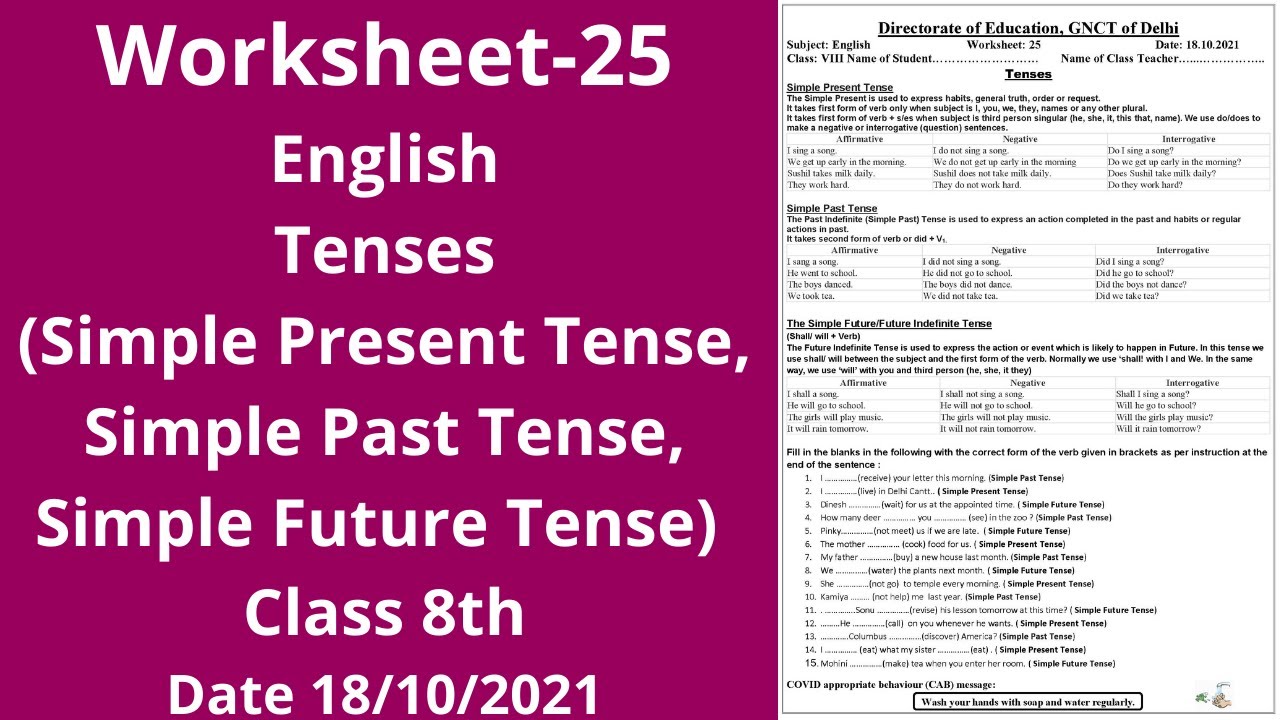Teaching English grammar tenses can be a rewarding but challenging task. It requires a deep understanding of the subject matter, effective teaching strategies, and patience. In this comprehensive guide, we will explore various methods and tips to help educators and learners effectively grasp English grammar tenses.
Introduction
Teaching English grammar tenses is fundamental to achieving fluency in the language. Whether you’re an English teacher looking for new approaches or a student seeking clarity, this guide will provide valuable insights and strategies. Let’s dive into the intricacies of teaching English grammar tenses.
How Can We Teach English Grammar Tenses
English grammar tenses are essential for conveying time-related information in sentences. To teach them effectively, we need a structured approach. Here’s a step-by-step guide:
Understanding the Basics
Before delving into teaching, ensure that you have a solid grasp of English tenses yourself. Review the various tenses, including present, past, and future, as well as their continuous and perfect forms.
Start with the Fundamentals
Begin teaching by explaining the basic tenses – present simple, past simple, and future simple. Use clear examples to illustrate when each tense is appropriate.
Build on the Foundation
Once the fundamentals are understood, introduce more complex tenses such as present continuous, past perfect, and future perfect. Emphasize the nuances of each tense.
Real-life Application
Connect grammar tenses to real-life situations. Show how they are used in everyday conversations, news articles, and literature. This contextual understanding enhances comprehension.
Engaging Exercises
Incorporate interactive exercises into your lessons. Use worksheets, games, and online quizzes to reinforce learning and make it enjoyable.
Correcting Mistakes
Encourage students to practice and make mistakes. Correct their errors constructively, emphasizing the correct usage of tenses.
Continuous Practice
Consistent practice is crucial. Assign homework that includes writing exercises and speaking activities to reinforce what has been learned.
Use Technology
Leverage technology with language-learning apps and online resources that offer interactive exercises and instant feedback.
Cater to Different Learning Styles
Recognize that students have varied learning styles. Some may grasp tenses better through visual aids, while others might prefer hands-on activities. Adapt your teaching methods accordingly.
Address Common Challenges
Identify common challenges students face when learning grammar tenses, such as irregular verbs, and dedicate time to addressing them specifically.
Encourage Questions
Create an open environment where students feel comfortable asking questions. Use their inquiries as teaching opportunities.
Track Progress
Regularly assess your students’ progress through quizzes and tests. Adjust your teaching approach based on their performance.
Provide Resources
Recommend grammar books, online tutorials, and language courses that can supplement your teaching.
Foster a Growth Mindset
Instill a growth mindset in your students, emphasizing that learning grammar tenses is a process that requires patience and effort.
Cultivate a Love for English
Inspire your students to appreciate the beauty of the English language by sharing interesting facts, idioms, and quotes.
Incorporate Cultural Context
Explore how different English-speaking cultures use tenses. This adds depth to the learning experience.
Interactive Workshops
Organize workshops or group discussions where students can practice using tenses in real conversations.
Peer Interaction
Encourage peer-to-peer teaching and collaborative projects. Learning from peers can be highly effective.
Stay Updated
Keep up with the evolving nature of language. New idioms and expressions constantly emerge, so stay informed.
Seek Professional Development
Attend seminars and conferences on language education to enhance your teaching skills.
Tailored Support
Provide additional support to students who struggle with specific tenses. One-on-one sessions can be beneficial.
Embrace Creativity
Incorporate storytelling and creative writing into your lessons to make tenses come alive.
FAQs
Can anyone learn English grammar tenses?
Absolutely! English grammar tenses can be learned by anyone with dedication and practice.
What is the most challenging aspect of teaching tenses?
Teaching irregular verbs and explaining the nuances of perfect tenses can be challenging.
How long does it take to become proficient in English tenses?
The time it takes varies from person to person, but regular practice and guidance can expedite the process.
Are there any shortcuts to learning tenses?
While there are no shortcuts, effective teaching methods and consistent practice can make learning more efficient.
How can I make grammar tenses fun for my students?
Incorporate games, storytelling, and interactive exercises to make learning tenses enjoyable.
Where can I find reliable resources for teaching tenses?
You can find helpful resources in grammar books, online courses, and educational websites.
Conclusion
Teaching English grammar tenses is a rewarding endeavor that requires patience, creativity, and dedication. By following the strategies outlined in this guide and adapting them to your students’ needs, you can make the learning process engaging and effective. Remember, mastering grammar tenses is a journey, and with the right guidance, anyone can achieve fluency.




